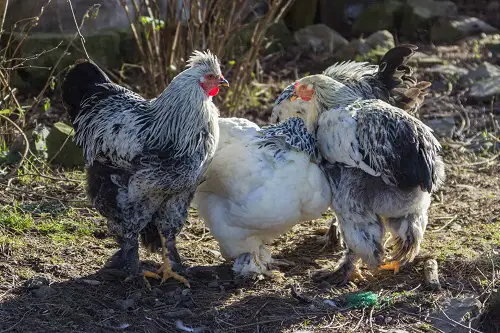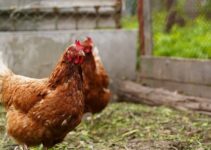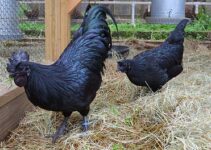Brahma chickens are a popular breed of chicken that can be raised for their eggs or their meat. Brahma chickens have large heads and bodies, lay big eggs, and are known to be friendly. If you’re interested in raising a Brahma chicken for meat or eggs, read on to learn more about this breed.
Contents
History of the Brahma Chickens
There are a lot of conflicting stories about the origins of Brahma chickens, but it is widely accepted that they were developed in the United States. Around 1853, these chickens were imported from China and came to be known as “Shanghai” Birds or “Shanghaes”.
The Brahma chicken gets its head shape from the grey Chittagong chickens of the Malay type. The chicken was given many different names, but in 1852, poultry judges decided to name it Brahmapootra. Later that same year, George Burhan gifted Queen Victoria with nine of these chickens. This gift led to the debut of the Brahma in England. English breeders developed a dark-feathered Brahma and exported it back to the United States.
In the year 1865, the Poultry Club of Great Britain recognized both the light and dark Brahmas in its British Poultry Standard. America Poultry Association (APA) followed suit in 1874 by adding both the light and dark varieties in its Standard of Perfection. The buff variety was later added in 1924.
Characteristics of Brahma Chickens
Colors
A Brahma chicken will come in three colors: light, dark, and buff. But what if we told you there’s more? There are even more colors not recognized by the APA, like the gold partridge and blue exchequer. The APA only recognizes the three colors because they’re popular enough. All Brahma chickens have black tails, regardless of their official color.
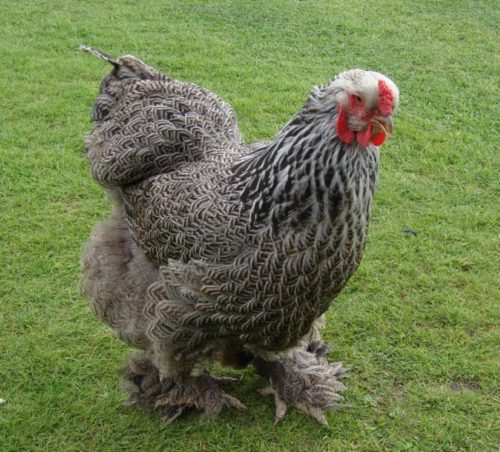
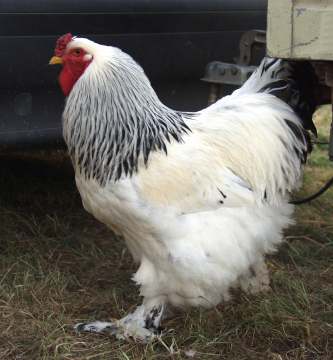
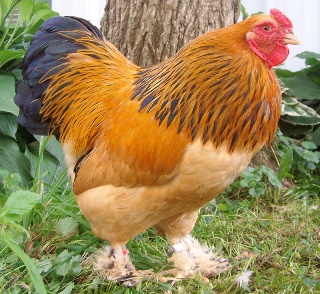
Hardiness
Brahma chickens are tough and hardy. Their disease resistance is one of their best features. They are known to be long-lived and generally stay in good health throughout their lifespan if they are well taken care of. Some have said that a well-cared-for Brahma can be expected to live as long as 15 years.
Broodiness
Brahma chickens are not just good mothers; they are also good setters. They will sit on the eggs until they hatch and take care of the chicks.
Body Weight and Size
Brahma chickens can weigh up to 10 pounds for the roosters and 8 pounds for the hens on average. The Brahma chicken’s average height for a rooster is 2.5 feet.
Egg Laying
Brahma hens start laying eggs at about 6-7 months old. Their eggs are medium to large in size and brown in color. The average Brahma hen can lay around 150 eggs per year, which is about 3-4 eggs per week.
Temperament
Brahma chickens are large, friendly birds. They have a docile, gentle demeanor and never attack people or other chickens. Due to their friendly nature, Brahma chickens can be kept in confined conditions. However, they thrive best in open conditions where they can roam. They love to forage and enjoy the delicacies from the garden while exercising their enormous muscles.
Life Expectancy
The life expectancy of a Brahma chicken is between 8 and 10 years. Some can even live up to 12 years. They are very hardy birds and are not prone to many diseases or health issues.
Advantages or Pros of Keeping Brahma Chickens
Here are the seven main advantages of keeping Brahma chickens.
- They are docile and do not attack you or any other feathered community.
- These chickens are easy to keep and do not require much attention
- They are good foragers, meaning they feed on grasses, leaves, bugs and other small insects found in the backyard.
- They lay large eggs and Brahma hens make good mothers.
- They grow at a faster rate and, therefore, become adult chickens in about six months.
- They are great at scavenging and finding their food.
- They are not too noisy and may be kept in confined spaces without disturbing people in the neighborhood.
Disadvantages or Cons of Keeping Brahma Chickens
Here are the eight disadvantages of raising Brahma chickens.
- They are not very good at flying and cannot protect themselves from predators.
- They require a lot of space because they’re big breed chickens.
- They are more expensive than other breeds of chickens.
- They have fewer eggs to offer and don’t lay eggs as often as other breeds of chickens.
- The hens tend to go broody often, which means they can stop laying eggs.
- They require a lot of care and attention.’
- They consume more food or feed than an average chicken due to their large body size.
- 8. They are susceptible to lice and mites.
Where to Buy Brahma Chicken & Chicks
Brahma chicks are not readily available to buy. You can buy Brahmas from a good breeder or a chicken hatchery such as Cackle Hatchery and Meyer Hatchery. They are also sometimes available for sale on the Internet. Kindly check this post: 10 Best Hatcheries for Brahma Chicks.
Adult Brahma chickens for sale can be found in some poultry farms. You can also visit your local state fair and auctions. You can also search the internet to see those who have Brahma for sale.
Price of Brahma Chicks & Chicken
The price of Brahma chicks is between $3 and $7, depending on location or hatchery. The price of an adult Brahma chicken depends on many factors, like location and source. The price ranges from $30 to $45 for a Brahma chicken.
Pheasant Chicks
While we’re delving into chicken breeds, the importance of raising pheasant chicks is worth mentioning. Pheasants, known for their vibrant plumage and wild beauty, are popular for game bird enthusiasts. If you’re considering adding pheasant chicks to your flock, ensure you provide the right brooding conditions, including a warm and secure environment. Pheasant chicks require specific care and nutrition, so research their unique needs and growth stages to foster their health and well-being. Raising pheasant chicks with proper care and attention can be a rewarding endeavor for novice and experienced poultry keepers.

